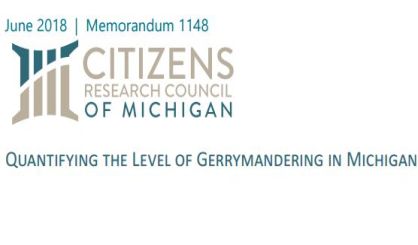
How big of a problem is gerrymandering in Michigan? According to a new report from the Citizen’s Research Council of Michigan, it’s a significant one. “Quantifying The Level of Gerrymandering In Michigan” finds the practice goes back to the 1800s as politicians drew districts in order to benefit their own parties. Research Associate Jordon Newton tells WSJM News one way to quantify gerrymandering is to look at the “efficiency gap,” which measures what percentage of votes in district are wasted.
“Say 75% of a district is Republican and 25% is Democratic,” Newton said. “Both parties, in theory, are wasting just as many votes in that district because the extra votes beyond 50%, in terms of actually converting a seat, don’t actually matter.”
Newton says if the efficiency gap in a district is more than 8%, then that’s a gerrymandered district. He says many areas in Michigan have higher efficiency gaps. The ones that are the most affected tend to be in suburban areas in the southeast. Michigan voters could decide in November if a non-partisan panel should draw the state’s districts. Although the Citizen’s Research Council takes no position, Newton says other states, including Iowa, similar systems. You can see the full Citizen’s Research Council of Michigan report right here.






